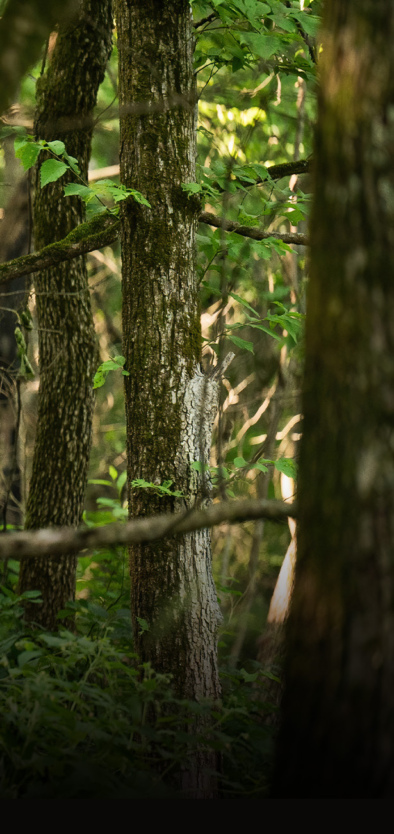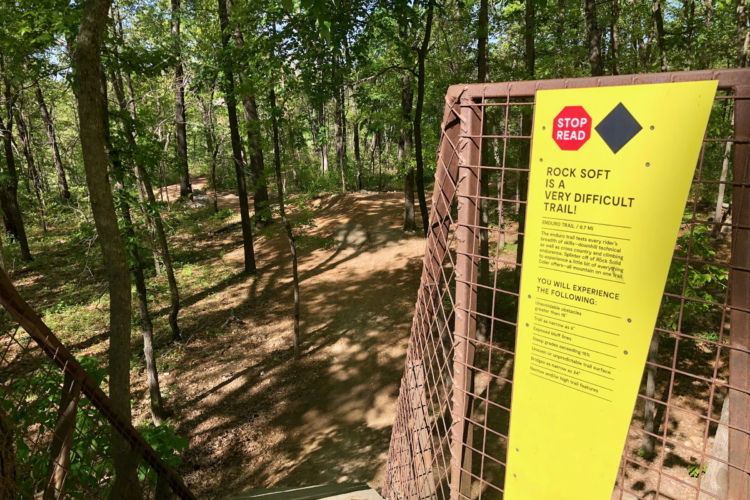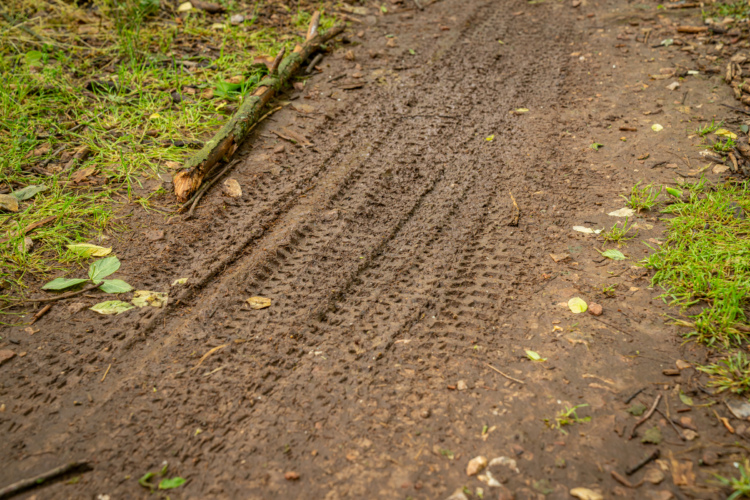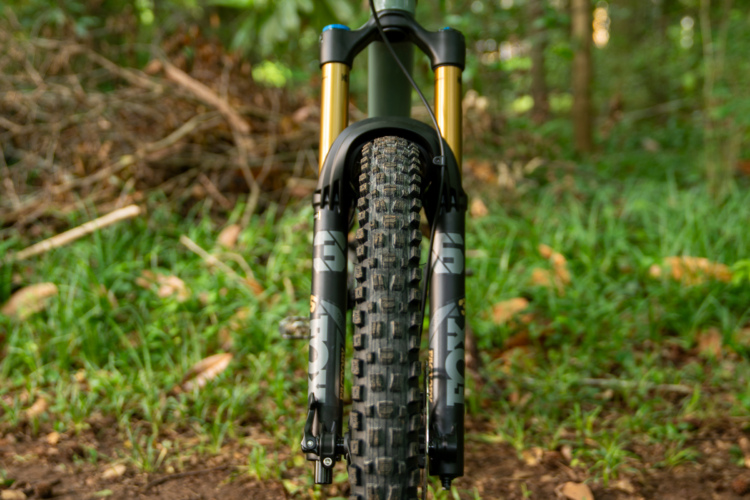Over the past decade, the title “mountain bike destination” has been newly attached to small towns across the globe. In many places, that title is celebrated, the result of a concerted effort to attract mountain bike tourists and the ensuing economic benefits they bring. On the surface, mountain bike tourism is a win-win: mountain bikers get to experience a new place to ride and local economies are boosted. Yet at the margins, there are some downsides and tradeoffs involved in becoming the next great mountain bike destination.
The MTB Explosion in Derby, Tasmania (Australia)
At the end of last year, I came across this article from ABC News Australia about some of the challenges the tiny rural town of Derby is facing in light of its newfound popularity among mountain bikers. Read the full article if you have the time, but here’s a recap.
[see_also id=’55867′]
The town of Derby is tiny. It’s an old mining town that at its peak had 3,000 residents, but in more recent times the population has dwindled to less than 200. The folks who live there mostly work in forestry and farming. Several years ago, the area received a big grant to build MTB trails, and they ended up creating some incredible trails. The Enduro World Series made a stop there in 2017, and it was voted the best course on the circuit. Tourism is booming, with 30,000 visitors to Derby in 2017 alone. New restaurants and bars are opening up, and there are new hotels, too.
As a result of this boom, real estate prices have almost doubled in recent years, potentially making it difficult for some longtime residents to stay as rents rise. (Some who owned property have already cashed out and moved on.) Now, some mountain bikers are beginning to oppose area logging operations that employ longtime residents because the mountain bikers are worried about how this might affect the trails and the scenery.
On the whole, it seems most Derby residents are benefiting from increases in tourism. But clearly, there are some–like loggers and other working-class residents who can no longer afford to live there–who are not benefitting equally from mountain bike tourism.
MTB Tourism in Fruita, Colorado

Much digital ink has been spilled on the great success that is mountain biking in Fruita, and it’s all true. What started out as the home of “Mike, the Headless Chicken,” is now one of the best-known mountain bike destinations in the USA, if not one of the best known in the world. Eighteen years ago, Troy Rarick, founder of Over the Edge Sports bike shop in Fruita and the Fruita Fat Tire festival, wrote this in the foreword to Bob D’Antonio’s Mountain Biking Grand Junction and Fruita Falcon Guide:
“(In 1995) Fruita was a pretty quiet, okay very quiet, town just west of Grand Junction, Colorado. Home to less than 4,000 people and, in that day, not even one coffee shop. Wow, how things have changed.”
Things in Fruita have changed indeed. The Fruita Fat Tire festival now attracts thousands of riders each spring, and the Colorado Plateau Mountain Bike Trail Association (COPMOBA) continues to etch more and more high-quality singletrack trails into the desert surrounding the town of Fruita. In 2017, the population in Fruita was estimated at nearly 13,000 people, more than triple the number Troy Rarick referenced in 2000.

In 2000, the same year Rarick wrote his foreword and just five years after that first Fruita Fat Tire Festival, the average home price in Fruita was $95,000. Today, according to Trulia, the average home price is $235,000, an increase of 147%. That’s more than triple the rate of inflation since 2000. Increased housing costs mean rising rents and property taxes, which can make it difficult for longtime residents to stay in a place like Fruita. Of course, that rise isn’t just due to an increase in tourism; clearly many factors are at play when it comes to real estate prices.
Tourism brings new jobs… and new probs
Representative Yeulin Willett represents Colorado District 54, which includes Fruita and Grand Junction. Not only that, he’s a dedicated mountain biker who rides 2-3 times a week. Willett has done a lot to promote tourism in the Grand Valley, but notes that he’s also “strongly cautioned that we need to not make [tourism] the top of the pyramid, but a strong adjunct to our economy.” He also notes that tourism certainly has some downsides, including overcrowding, low paying jobs, and “physical stress to our trails.”
In the Fruita guidebook foreword, Rarick notes that, “exploring and developing the cow trails north of Fruita began to yield more and more of the finest singletrack we had ever ridden.” Ranchers had been grazing cattle on the land north of Fruita for decades before the mountain bikers arrived, and many of them remain today. However, looking at US Census data, it’s clear that a significant number of ranchers and farm employees have moved on in the last decade and a half.

“Farming, fishing, and forestry occupations” accounted for 1.1% of the jobs in Fruita in 2000, representing 31 jobs. In 2016, that number dropped to zero, both in percentage terms and in absolute terms. Similarly, “construction, extraction, and maintenance occupations” accounted for nearly 12% of the jobs in Fruita in 2000; by 2016 just 5.6% of residents were employed in similar jobs. Not only did the percentage of workers in this category fall by half, but the overall number of workers employed in these fields fell, from 345 to 292.
On the flip side, Fruita saw a rise in service-related jobs from 2000 to 2016. Back in 2000, 222 people were employed in “arts, entertainment, recreation, accommodation and food services.” While the 2016 data uses slightly different categories, “food preparation and serving related occupations” alone accounted for 404 jobs in 2016. Add in entertainment, recreation, and accommodation positions and this is potentially a huge uptick. Unfortunately, these types of service industry jobs don’t usually pay as well as the construction, extraction, maintenance, and forestry jobs that may have been lost.

To be fair, similar job trends have hit the country as a whole, and are not necessarily unique to Fruita or even mountain bike destinations for that matter. However, looking at the country as a whole, the rise of the leisure class, to which most mountain bikers belong, coincides with a widening gap between the rich and the poor in America.
Mountain bikers give, but we also taketh
Another potential downside to mountain bike tourism is the added costs involved in providing community services to a transient population. Strains on everything from local emergency services to roads and parks carry a very real economic cost. If communities are able to plan for this, they can introduce hotel and restaurant taxes to cover costs, but this can take time. And, tax increases like this often have spillover effects on local business owners and consumers alike.
Taken on the whole, mountain bike tourism seems to be a net positive for communities around the world. However, that doesn’t mean the benefits are spread evenly among all residents when mountain bikers come to town. With smart planning and consideration for longtime residents, mountain bike tourism can revive communities and preserve them for generations to come.
Have you seen any downsides to mountain bike tourism where you live? We’d love to have you join our conversation.






















8 Comments
Mar 5, 2018
Mar 6, 2019
Mar 5, 2018
However, every place that ever grew anywhere at anytime has the same story. At some point it was sparse and cheap. At some point it became desirable.
NYC was cheap once...300+ years ago.
If a 'local' was there first, they will have had the chance to do very well economically by doing next to nothing and riding the gravy train as their local economy grew.
If they chose a different path and are now priced out, the best attitude is probably to look back and be thankful to have lived so inexpensively for so long in such a desirable area. There are still plenty of amazingly sparse and cheap areas in this country that haven't hit most people's radar yet. Do your best to find the next one...and make different choices so you aren't displaced again.
No one is guaranteed cheap rent in paradise their whole life. I'm sure we all wish that weren't the case.
Mar 6, 2018
Mar 6, 2018
Mar 6, 2018
*Oakridge was particularly hard hit due to being almost completely surrounded by federal land, and having only one mill. My hometown, for instance, is surrounded by private, state, and federal lands, and have multiple mills. Consequently while impacted by fed land changes, state and private have been able to continue on. Just like investing, diversification helps.
Mar 6, 2018
Mar 6, 2019